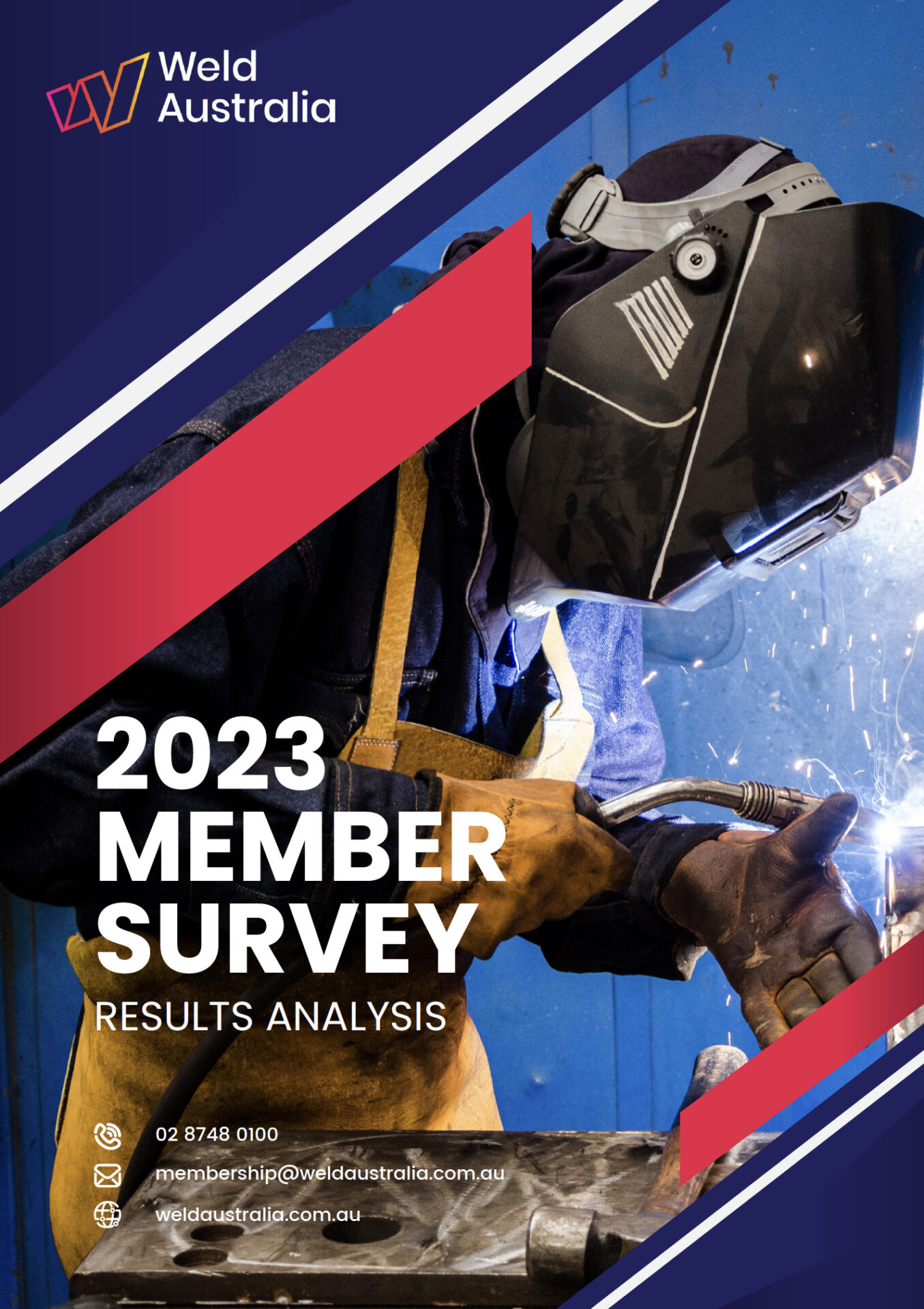MEDIA RELEASE
Weld Australia has released the results of its 2023 Member Survey. The results demonstrate that Australia’s welding and fabrication industry is facing a whole raft of challenges that will make the delivery of the Federal Government’s plans for a renewable energy revolution almost impossible—from severe labour shortages that are inhibiting the growth of the welding industry, through to rising material and labour costs. The Federal Government must step in and provide real support to industry to make the renewable energy revolution a reality.
According to Geoff Crittenden (CEO, Weld Australia), “Distributed in March 2023 and completed by over 130 companies, our 2023 Member Survey indicates that labour shortages, and the rising cost of materials, energy and labour remain high on the agenda for the welding industry. Without funding and support from governments at all levels, these challenges will make it nearly impossible for industry to deliver the necessary manufacturing capability required for the Federal Government’s ambitious renewable energy revolution.”
When asked to select their top two factors, 60% of survey respondents indicated that labour shortages are most likely to inhibit the growth of their business in 2023. When asked what their main concern is right now, 45% confirmed that labour shortages was on the top of their list. 50% of Australia’s welding workshops are operating at 80% of their capacity or below. When asked why this is, a lack of skilled workers was the overwhelming answer.
“With a considerable volume of work being onshored and a greater sentiment in the market to ‘buy local’, Australian fabrication companies are so strapped for skilled welders that they are operating well below capacity. They are being forced to turn down jobs because they simply don’t have the manpower to complete the work,” said Crittenden.
“How then, will Australian fabricators cope with the influx of work required to make the Federal Government’s renewable energy revolution reality?”
The Federal Government has legislated emissions reductions targets of 43% (on 2005 levels) by 2030 and net zero by 2050. These targets will necessitate the construction of new infrastructure on a massive scale. Australia’s existing renewable energy generation of 64GW is forecast to grow to over 218GW by 2050. This will comprise 90GW of wind, 39GW of solar, 18.7GW of water, and 35.9GW of battery storage.
It is expected that over 11,000 wind towers will need to be produced, each requiring 500 tonnes of plate steel for onshore towers, or 750 tonnes for offshore wind towers. To connect all this new generation to consumers, AEMO estimates more than 10,000km of new transmission lines and 25,000 transmission towers (at 30 to 60 tonnes of steel per tower) will need to be constructed.
“All this the renewable energy infrastructure will require a veritable army of skilled workers, including welders,” said Crittenden. “Australia will have a shortfall of at least 70,000 welders by 2030.”
And yet, 45% of survey respondents (compared to 47% in 2022) already have a pipeline of work that extends for six months or longer—this protracted pipeline is necessary in the face of ongoing skills shortages. Another 33% of respondents have a pipeline of work that extends between three and six months. This is a marked increase on Weld Australia’s 2020 member survey results; the most common answers were less than one month (at 28%), one month (19%), and two months (16%).
“While our governments can wish, and hope, and make public pledges about Australia’s transition to renewable energy, at the moment, we simply do not have the sovereign manufacturing capability to make this a reality,” said Crittenden.
“According to the results of our survey, at 62%, the majority of the Australian welding industry supports the Government’s carbon emissions reduction targets,” said Crittenden.
“However, 75% of the welding and fabrication industry believes that Australia’s governments are not doing anywhere near enough to support industry in achieving these targets. Our governments will need to consider policy and funding opportunities, reduce red tape and regulatory barriers, and support local investment to enable the renewable energy transition.”
“Without a massive investment in fabrication and steelmaking facilities, skills and training in each state, and real, practical support for local industry, Australia’s renewable energy revolution will simply not be a reality,” said Crittenden.
In the meantime, the welding industry is taking steps to try to overcome these labour shortages—without government support. 60% of respondents indicated that they are training or upskilling their existing staff, another 55% are either increasing wages or improving employee benefits, and 32% are leveraging different talent pools, such as apprentices, females and prisoners. Another 57% are either investing in automation and technology, or changing their operational processes. The welding industry strongly supports investment into TAFE to help combat labour shortages; 21% support free TAFE for apprentices, 14% support increased funding to upgrade TAFE facilities, and 64% support both options.
The welding industry is also investing in its own sustainability performance and credentials, and has made significant headway in the last 12 months. Some of these measures include: installing LED or sensor lighting (80%; up from 53% in 2022); waste reduction programs (78%; up from 46% in 2022); recycling, upcycing and repurposing programs (75%; up from 46% in 2022); and implementing a net zero carbon plan (50%; up from 13% in 2022).
Australia’s welding industry is also concerned about rising labour costs and rising material costs, with 50% and 45% (respectively) of respondents indicating that they could inhibit their business growth this year. Only 47% of respondents indicated that their gross profit margin had increased over the last 12 months to help cover these rising overheads. Alarmingly, the welding industry expects these overheads to continue to rise this year, with 82% expecting even higher materials prices and 85% expecting even higher energy prices.
– ends –

